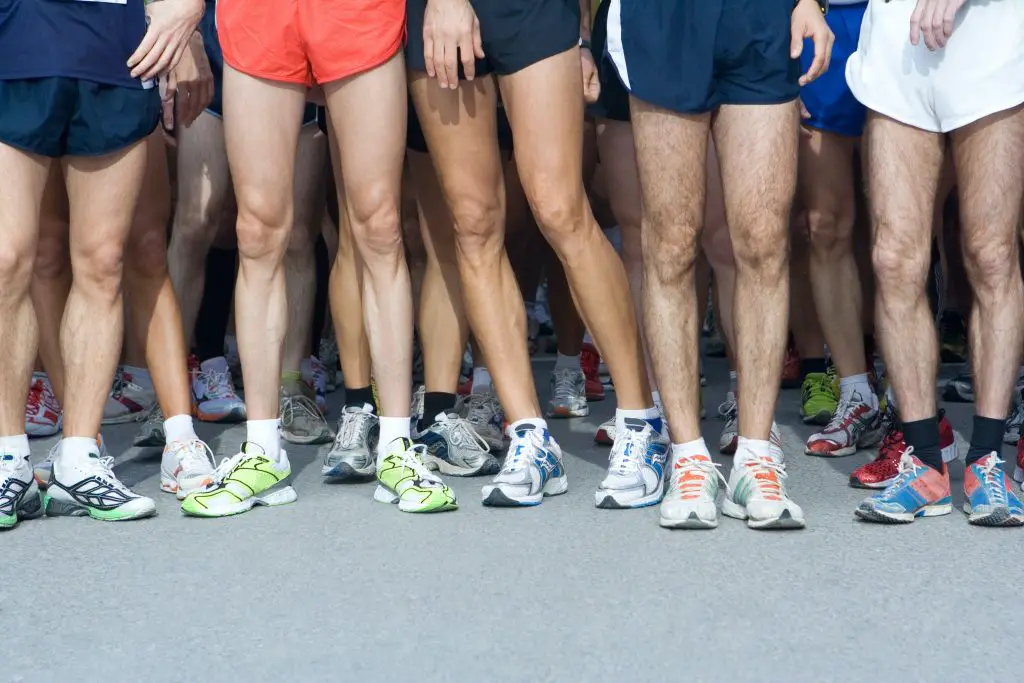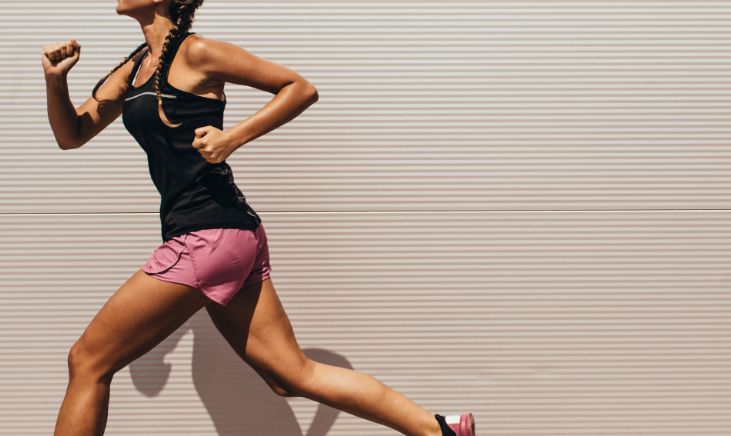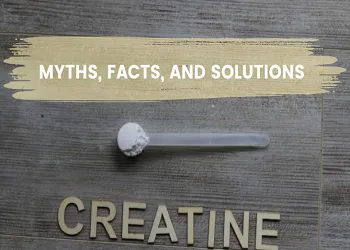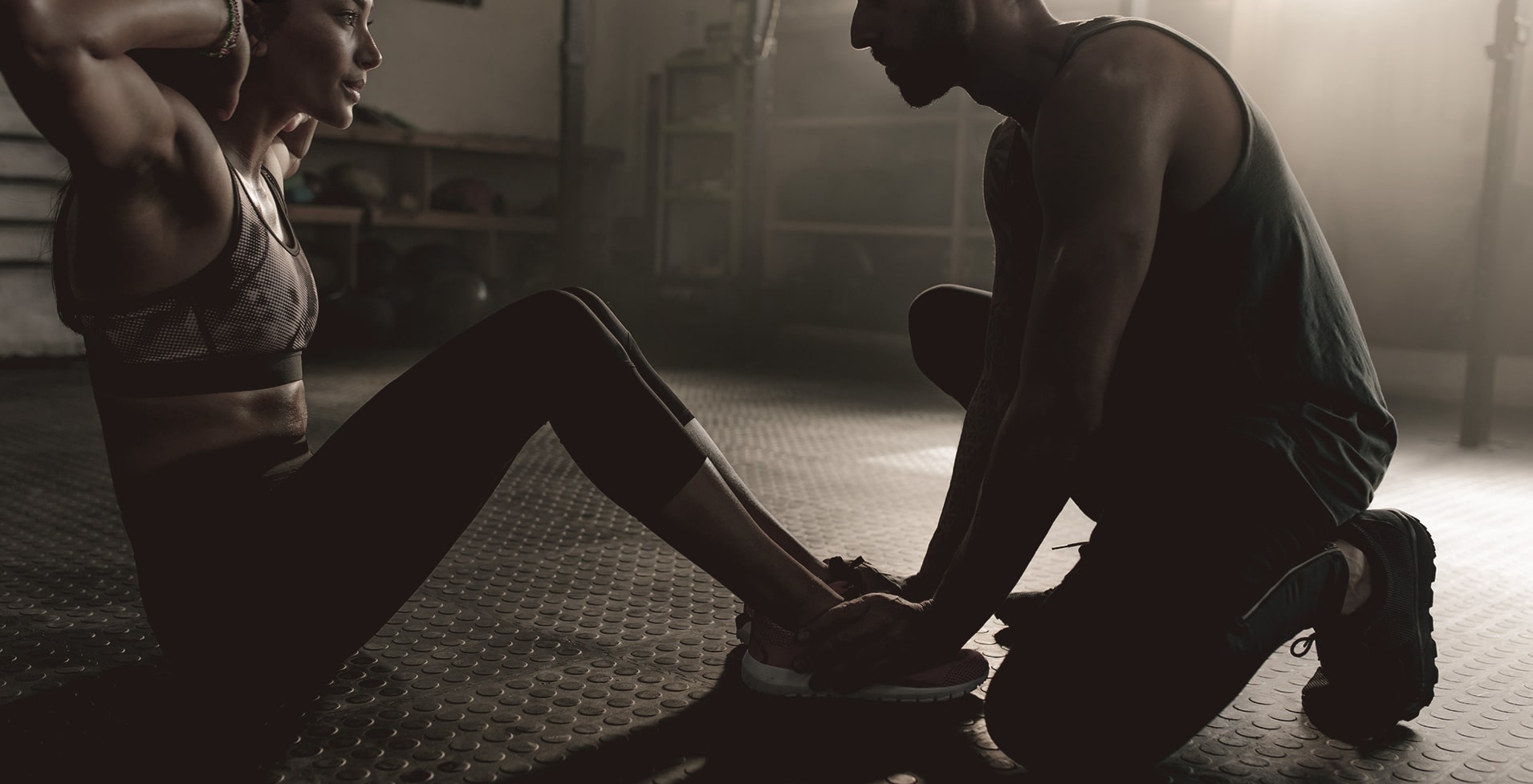Does running make your legs bigger, or does it just burn calories? It’s one of those interesting questions that you get in the gym and everybody seems to have a different opinion on it. So we decided to look a little more into the science of it all to help answer the question once and for all. So will my legs grow if I run?
Well, the answer depends on other fitness and diet factors, so it’s not a simple yes or no. In this article, we’ll dive into different scenarios that could affect the aesthetic of your legs if you’re running consistently.
First, it’s important to note that running has the potential to make your legs look bigger if that is what you want. However, some people wish their legs looked smaller. In this scenario, it’s possible that running can slim down your legs. It really depends on nutrition, genetics, intensity, the volume of training, and the type of training.
So, the short answer is that running can make your legs look bigger, but it can also make them look smaller. Running can be a tool to achieve either aesthetic.
Let’s jump into how all of this works.
Table of Contents
The Short Answer: Yes & No
If you’re interested in only making your legs grow, then running with more volume and intensity, as well as eating more, might help you bulk up and get those muscular legs.
If you’re interested in running to make your legs look smaller, you would have to focus on maintaining a caloric deficit to lose any potential body fat on your legs. Going for light jogs is a great way to gain strength and small amounts of leg muscle while you’re leaning out.

How Running Shapes Your Leg Muscles
If you run regularly, you will likely notice that your legs become more muscular the longer you exercise. The motion of running increases mechanical stress on your legs, which signals the body to trigger muscular growth. Muscle growth occurs as a response to the mechanical stresses of running and the volume of each stride you take. Part of this is in your control, as you can raise the intensity of your runs and/or the distance of your runs to increase your volume.
Interestingly, if you push your running cardio sessions hard enough, you can get a similar growth response to resistance training. A 2014 study showed that improvements in hypertrophy (enlargement of tissues) can come from resistance training and aerobic training as long as you increase your intensity, duration, and frequency for the cardio portion.
Here’s a quick breakdown of the study findings:
Size of leg increase:
- 7% increase from cardio training
- 9% increase from resistance training
Effectiveness of aerobic training to create muscle growth dependent on:
- Exercise intensity: 70–80% Heart Rate Reserve
- Duration: 30–45 minutes
- Frequency: 4–5 days per week
Now here are some of the important questions, right?
Does running make your butt bigger?
The short answer is yes; however, the bigger question is how to get the most gains out of your running.
In the late 90s, scientists looked at muscular activation in horizontal and uphill running. They found that during horizontal running, the most active leg muscles were the adductors, semitendinosus, gracilis, biceps femoris, and semimembranosus. Don’t worry about all the big names — just note that none of these are your glutes. They’re basically saying that your hamstring, the front of your quad, and some muscles on the inside of your thighs are very active during horizontal running.
Now, the interesting part was when they looked at uphill running. The activation of muscle groups listed above shifted more towards gluteals, calves, and lateral quads. So does running make your butt bigger? Well, if you run up hills, then yes. That being said, remember that running horizontally will also help your glute gains, but running uphill gives you a slight advantage in that category. For reference, with uphill running, there is approximately 80% activation of the glutes, versus horizontal running, which gets about 72% activation.
Will running make your calves grow?
Much has been said about the ability to grow calves in the gym. I’ve heard it all. “I can’t grow my calves due to genetics”; “Calves don’t grow as much as other body parts”; “Slow-twitch muscles like my calves don’t grow as much as muscles with fast twitch fibers.” Although some of this may seem to be true, the science so far doesn’t give these statements a leg to stand on. A 2020 study shows that light loading with 20–30 repetitions versus heavy loading with 6–10 repetitions creates similar improvements in muscular gain for both the soleus and gastrocnemius (fancy words for your calf muscles).
The study mentioned above doesn’t guarantee that you will achieve major growth in your calves from running. But it hints that you would develop some calf muscle growth compared to doing nothing.
How do genetics play a role?
So, now that you’ve learned that you can grow your muscles by running and training, we should mention the role of genetics, which is out of your control. A 2012 study notes that muscle is a highly heritable trait. Estimates range from 30–85% for muscle strength and a whopping 50–80% for muscle mass.
A hard truth about fitness: No matter how demanding and heavy your workouts are, you may not be able to affect your size based on your genetics. If you’re one of the unlucky ones with small-framed parents without much muscle mass, that trait may have passed on to you, and you may not be able to gain much mass. That doesn’t mean that you shouldn’t be training. It just means that you will need to keep your expectations in check about how much muscular gain you can achieve.
Sprinting vs. Jogging
So, we mentioned that when you increase the intensity of your runs, like incorporating sprinting, your propensity for muscle growth increases. So what about jogging? Is it true that sprinting makes your legs bigger than light jogging?
Look at a sprinter compared to a jogger, and you should see some anecdotal evidence.
The sprinter definitely has more muscular development in their legs. They even have a more developed upper body as well. This can result from multiple things, including training intensity, volume, and nutrition, which is why we can’t rely solely on anecdotal evidence alone.
Let’s go back to the intensity and mechanical stress put on the legs by running. Typically, there will be less load during light aerobic work and more during sprinting sessions. If you were to sprint high volumes throughout the week, the increased intensity paired with increased volume would definitely help grow your legs. Luckily, if that is your goal, you can still get modest growth by doing high volume and lower intensity, as mentioned above. Some strength training evidence is available to show that it’s possible, like the study below.
This study looked at 3 groups performing leg extensions:
- High-intensity exercise (1 set of 80% of 1 rep max)
- High-intensity + volume exercise (3 sets of 80% of 1 rep max)
- Low-intensity + volume exercise (3 sets of 30% of 1 rep max)
Both the high-intensity exercise group and low-intensity + volume group created an increase of 7% in muscle size. This is similar to the hypertrophy observed with several aerobic exercise training protocols. The study follows up by saying that “it appears high volume but low external loading exercise (30–40% of maximum) can elicit significant gains in skeletal muscle mass.”
Caloric Intake & Running for Muscle Growth
As mentioned above, caloric intake always plays a big part in fitness goals and muscle growth. It’s important to note that if you are training hard, you will probably not be able to drop your calories too low. This is a recipe for disaster, no matter what your goals are. Your body needs fuel to perform, and severe undernutrition won’t help you reach any goal in a long-term, healthy, and sustainable way.
If you want bigger legs:
- You need to be in a caloric surplus. You need to eat more than you burn. I wouldn’t expect a massive muscle gain from running or lifting weights, if you’re in a caloric deficit. So keep your expectations in check and eat a bit more each day than you were previously (tracking your intake will be helpful if you want to get nitty-gritty). Your lower body muscles need the energy for growth.
- For cardio exercises for leg growth, focus on running with high intensity. You will want lots of speed, lots of hills, and decent-sized recovery breaks in between sets.
If you want to slim your legs down and lose weight:
- Focus more on a slight caloric deficit, meaning you burn more than you consume.
- You can stick with regular running on flat surfaces. Do some long-distance running and do it often for toned legs. You likely will burn more calories from fat since you will be in the so-called “fat-burning zone.” This zone refers to the exercise intensity level in which you’re at roughly 70% of your maximum heart rate. The lower your intensity during exercise, the higher percentage of body fat that’s used as an energy source for physical activity. This means that when you jog slowly, you burn body fat primarily as an energy source (even though you aren’t burning as many calories as when you sprint).
Take This Info & Run With It
Running can shape and grow your legs, depending on where you fit into the multiple variables at play, including the intensity, duration, and frequency of your runs. Like everything in fitness, your caloric consumption plays a significant role.
So, If you want your legs to grow, you can experiment with the variables to make it happen. Mix in lower body resistance or aerobic work while consuming enough calories (light surplus amounts) to make sure that you achieve hypertrophy.
If you prefer skinny legs, get to maintenance levels of calories for your weight or a slight deficit for a short period.
Finally, if you have lingering questions about running, muscle growth, nutrition, or anything else, the EverFlex trainers are here to help. Get your fitness journey on track with personal training, nutrition counselling, and so much more. Book a consultation today.














